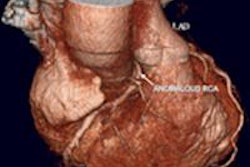Contrast-enhanced MRI pulmonary perfusion should be used in a broader clinical area, in part because the modality can be performed quickly, even in critically ill patients, but optimal temporal resolution and contrast-to-noise ratio are both necessary to achieve appropriate perfusion imaging of the lung, according to researchers.
The study, published online on 28 December by Insights into Imaging, also found that contrast-enhanced MRI perfusion techniques achieve "good agreement" with perfusion scintigraphy and SPECT. However, lead author Dr. Sebastian Ley, an associate professor of cardiothoracic imaging at the University of Toronto, who was formerly based at the University Hospital in Heidelberg, Germany, downplayed the use of noncontrast-enhanced techniques for pulmonary perfusion. He stressed the practical difficulties due to low spatial resolution and limited signal-to-noise ratio.
Contrast-enhanced MRI lung perfusion is achieved through the "rapid imaging" of contrast agent in the lungs after intravenous injection, with 2D MR images acquired as fast as 0.3 seconds per slice. The disadvantage, however, can be the lack of sufficient spatial resolution and anatomic coverage to characterize most perfusion defects, so 3D imaging techniques must be utilized.
"To visualize the peak enhancement of the lungs, the temporal resolution of contrast-enhanced MRI of lung perfusion has to be below the transit time of a contrast bolus through the logs, being in the range of three to four seconds," Ley stated. The most frequently used technique is the 3D gradient-echo pulse sequence, (FLASH), which can achieve temporal resolution of 1.0 to 1.5 seconds for each 3D dataset, depending on slice thickness.
As for the clinical application of contrast-enhanced MRI perfusion, the authors cited several studies, including 2006 research from Germany that evaluated 41 patients with acute pulmonary embolism. The study found "very high agreement" between MRI perfusion and SPECT perfusion for lobar, segmental, and subsegmental perfusion defects. The significance is that the modalities were able to detect subtle findings in suspected pulmonary embolism cases.
"This initial report brings MR perfusion in the pole position for being discussed as [a] new modality of choice for [pulmonary embolism] assessment," the authors wrote, referencing Ley's 2007 study published in European Radiology on MRI and pulmonary embolisms. "Furthermore, this radiation-free technique is optimally suited for follow-up studies and treatment monitoring."
Postsurgical benefits
A 2004 study published in the American Journal of Roentgenology, compared perfusion scintigraphy with MRI perfusion to assess postsurgical lung function. Japanese researchers used both modalities to assess blood flow in 60 patients with lung cancer. Their analysis found that MRI outperformed scintigraphy for the assessment of postoperative forced expiratory volume, or the amount of air that can be forced out taking a deep breath (AJR, January 2004, Vol. 182, pp. 73-78).
"Therefore, it was concluded that perfusion MR is a feasible alternative to pulmonary perfusion scintigraphy for predicting postoperative lung function in patients with lung cancer," Ley wrote.
Based on these studies and several other works outlined in their research, contrast-enhanced perfusion techniques are "broadly available and are easily and quickly performed, even in critically ill patients," he concluded. "Perfusion MR has shown good agreement with perfusion scintigraphy and SPECT. Therefore, this technique is ready to be used in a broader clinical area."
Given that contrast-enhanced MR pulmonary perfusion images can result in large datasets, the authors added that "visual evaluation would be challenging." They recommended future technology advances should provide "easy-to-use postprocessing utilities for visual and quantitative evaluation."



















